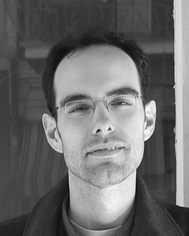 | Ron Castellano was born in 1973 and grew up on the Jersey Shore. He obtained his BS degree in chemistry from Gettysburg College in 1995, and a PhD from the Massachusetts Institute of Technology (2000) working with Julius Rebek, Jr. For the next two years he was an NSF postdoctoral fellow in the labs of Prof. François Diederich at the Swiss Federal Institute of Technology (ETH) in Zürich. Ron has been an Assistant Professor of Chemistry at the University of Florida since 2002. His research currently focuses on the design and synthesis of unconventional donor–acceptor molecules and studies of their emergent supramolecular architectures. Since arriving at UF he has received a Research Corporation Research Innovation Award (2003) and an NSF CAREER Award (2006). He is currently serving as Chair of the Florida Section of the American Chemical Society. Ron's hobbies will one day include yoga, biking to work, and jogging; for now, he enjoys season tickets to Gator basketball games. |
 | Jeroen Cornelissen studied chemistry in The Netherlands with a minor in polymer chemistry carried out at the Eindhoven University of Technology with Prof. E. W. Meijer and a major in supramolecular chemistry and catalysis at the University of Nijmegen. He received his PhD from the latter university in 2001 for research carried out under the supervision of Prof. R. J. M. Nolte. After post-doctoral work at the IBM Almaden Research Center in San Jose, USA with Dr R. D. Miller he returned to Nijmegen, where he is presently an Assistant Professor. His current research interests are in well-defined polymer architectures, hybrid systems of synthetic macromolecules and biopolymers and the use of viruses as building blocks in functional materials. |
 | Lee Cronin graduated from the University of York in 1994, and obtained a DPhil in bio-inorganic chemistry in 1997 at the University of York under the supervision of Prof. P. H. Walton. In 1997 he moved to the University of Edinburgh to take up a postdoctoral fellowship with Dr N. Robertson in macrocyclic ligand design and in the summer of 1998 took a two-month leave-of-absence to work at the University of Hokkaido, Japan, Institute of Electronic Science with Prof. T. Nakamura in the area of molecular conductors and magnetism. In August 1999 he began an Alexander von Humboldt Research Fellowship with Prof. A. Müller at the University of Bielefeld in Germany on the synthesis and crystallographic analysis of very large polyoxometalate clusters. He then started his independent academic career with the appointment to a lectureship at the University of Birmingham. In 2002 he moved to take up a Lectureship in Glasgow and was promoted to Reader in 2005 and to Full Professor in 2006. He was recently awarded a five year EPSRC Advanced Research Fellowship. He has wide ranging research interests presently focusing on cluster chemistry, coordination chemistry, ligand design, supramolecular chemistry, heterocyclic chemistry, self assembly, and nanoscale chemistry. In particular he is interested in assembling functional nanosystems, nanoscale molecules and materials, and has a deep interest in chemical complexity. |
 | Bert de Boer received his master's degree and his PhD (in 2001) from the University of Groningen, The Netherlands. His PhD thesis, under the supervision of Prof. Dr Georges Hadziioannou, entitled ‘Design, Synthesis, Morphology and Properties of Semiconducting Block Copolymers for Photonic Applications’, described novel methods to synthesize donor–acceptor block copolymers that can be utilized in organic photovoltaic cells. For this work, Bert received the poster and presentation award of the Dutch Polymer Days 2001. In 2001 Bert was also awarded the TALENT fellowship from the Netherlands National Science Foundation (NWO) and joint Bell Laboratories of Lucent Technologies (Murray Hill, NJ, USA) as a post-doc to work on molecular electronics based on self-assembled monolayers supervised by Dr Zhenan Bao. In January 2003 he was appointed tenure-track assistant professor in ‘Molecular Electronics’ at the Materials Science Centreplus of the University of Groningen, The Netherlands. Bert's research interests are self-assembled monolayers, molecular electronics, organic photovoltaic devices, organic field-effect transistors, sensors, organic light-emitting diodes, (conjugated) block copolymers and supramolecular organization. |
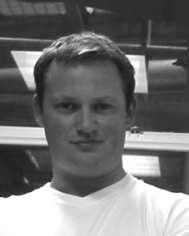 | Mark Green is currently a lecturer in bio-nanotechnology in the Department of Physics at King's College London. Mark has a first degree in chemistry from Manchester Metropolitan University, and a PhD in nanomaterials chemistry which was carried out under the supervision of Paul O'Brien at Imperial College between 1995 and 1998. This was followed by post-doctoral work at Imperial and Oxford, and industrial research positions at Oxonica Ltd, at the time a small company spun out from Oxford's Department of Engineering. Following a brief appointment as the Innovation Manager at the Royal Society, he accepted his current position in the summer of 2004. |
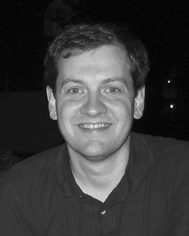 | Jeffrey Hartgerink received his bachelors degree from Washington University in 1993. His PhD was under the supervision of Prof. M. Reza Ghadiri at The Scripps Research Institute and focused on the synthesis and characterization of cyclic peptide nanotubes. In 1999 he joined the research group of Prof. Samuel I. Stupp at Northwestern University where he developed self-assembling nanofibers designed to induce bone-like mineralization. Jeff joined the faculty at Rice University in 2002 in the Departments of Chemistry and Bioengineering and is chiefly interested in supramolecular chemistry, self-assembly of nanostructured materials and their biological application. |
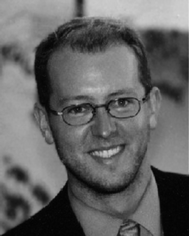 | Andreas Kilbinger was born in 1971 in Mainz, Germany. He received his undergraduate training in chemistry at the Johannes Gutenberg-University of Mainz and the Free University of Berlin. In 1999 he received his PhD from the University of Durham (UK). From 2000 to 2002 he worked as a post-doctoral fellow at the California Institute of Technology in the group of Prof. R. H. Grubbs. In 2003, he returned to the University of Mainz where he has since been working on his habilitation in the group of Prof. H. Frey. His research interests are centred at the interdisciplinary border of organic, polymer and materials chemistry. The general research topic of supramolecular polymer chemistry in his group includes synthesis automation, the synthesis of functional polymers via the olefin metathesis reaction, solid supported synthesis of well-defined block copolymers as well as the use of micro-reactors in polymer analogous reactions. |
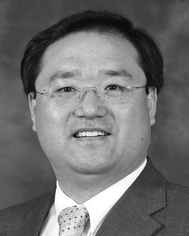 | Jinsang Kim holds an MS (1993) and a BS (1991) from Seoul National University, Korea, both in fiber and polymer science. He earned his PhD in 2001 in materials science and engineering from the Massachusetts Institute of Technology where he studied the synthesis of conjugated polymers, their supramolecular assembly, and their function as advanced fluorescence chemical sensors. After post-doctoral training at California Institute of Technology where he studied the expression of artificial genes to determine the extent to which artificial genetic information can be used to encode supramolecular assembly in macromolecular systems, he joined the Department of Materials Science and Engineering at the University of Michigan as an assistant professor in 2003. He also has joint appointments in chemical engineering, biomedical engineering, and macromolecular science and engineering. He has been doing extensive research on conjugated polymers and their device applications for biosensor development and optoelectronic device development. His current research topics include self-signal amplifying DNA sensors and sensor arrays, 3-D negative index materials through directed self-assembly, highly emissive and stable organic emitters, flexible conjugated polymer photovoltaic cells with controlled nanostructure, and solid state lighting devices under support from NSF and AFOSR. |
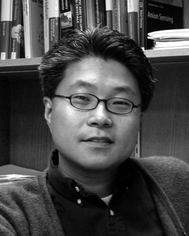 | Dongwhan Lee was born in Korea and undertook a major in chemistry at Seoul National University, receiving both BS and MS degrees under the guidance of Prof. Junghun Suh and Prof. Myunghyun PaikSuh. In 1996, he arrived at Massachusetts Institute of Technology and joined the group of Prof. Stephen J. Lippard to begin bioinorganic modeling studies of dioxygen-activating non-heme diiron enzymes. In the fall of 2001, he was awarded a PhD degree and moved on to pursue post-doctoral research in the laboratory of Prof. Timothy M. Swager. As part of organic materials research there, he developed synthetic routes to define space around conducting polymer sensors. In 2003, he began his independent career as Assistant Professor of Chemistry at Indiana University Bloomington. His current program is broadly based on synthetic inorganic and organic chemistry of functional molecules and materials, with focus on long-range mechanical coupling of artificial receptors, self-assembly and photophysics of discotic fluorophores, and conformational dynamics of shape-adaptive chemical architectures for molecular switching and sensing. The common theme threading through his group's on-going research is designing and implementing cooperative mechanical coupling schemes that can amplify local structural distortions of small molecules to ‘readable’ large-scale conformational changes at molecular and supramolecular levels. He received a National Science Foundation CAREER Award in 2005. |
 | Serena Margadonna has been the Leverhulme Lecturer in Materials Chemistry at the School of Chemistry and the Centre for Science at Extreme Conditions (CSEC) at the University of Edinburgh since 2004. She also currently holds a Dorothy Hodgkin Royal Society Research Fellowship which was awarded in 2003. She has been the recipient of the Laurie Vergnano Award of the Royal Society of Chemistry for meritorious research in inorganic chemistry in 2000, the AIC (Associazione Italiana Cristallografia) Prize for her research in structural crystallography in 2001 and the 10th ESRF (European Synchrotron Radiation Facility) Young Scientist Award for outstanding crystallographic work on complex materials, with special emphasis on strongly correlated electron systems in 2005—she is the only British Scientist whose work has been recognized by this International Prize since its inception. She has worked in several areas of solid state chemistry, including polymerisation in fullerenes, superconductivity in fullerides and borides, intermediate valence in rare earth fullerides and intermetallics, magnetism and electronic properties of low-dimensional solids based on metallophthalocyanines, photo- and piezo-switchable molecular magnets, and more recently on transition metal fluorides. |
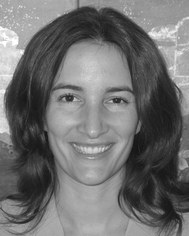 | Heather D. Maynard received a BS in chemistry with honors from the University of North Carolina at Chapel Hill in 1992 and a MS in materials science in 1995 from the University of California, Santa Barbara. Her PhD from the California Institute of Technology was awarded in the summer of 2000 for research in the group of Nobel Prize winner Robert Grubbs. She then moved to the laboratory of Jeffrey Hubbell at the Swiss Federal Institute of Technology (ETH) and University of Zurich, where from 2000 to 2002 she was an American Cancer Society Post-doctoral Fellow. Dr Maynard joined the UCLA faculty as an Assistant Professor in August 2002 as the first Howard Reiss Career Development Chair in the Department of Chemistry and Biochemistry and as a member of the California NanoSystems Institute. Her interests focus on combining polymers with biomolecules for applications in human health and nanotechnology. Maynard develops new strategies to synthesize protein–polymer conjugates. She also creates polymer films for patterning and arraying oriented and bioactive proteins. Maynard has received the Amgen New Faculty Award, NSF Career Award, and is an Alfred P. Sloan Fellow. |
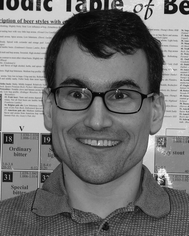 | Mark MacLachlan received his PhD degree in materials chemistry at the University of Toronto under the direction of Ian Manners and Geoffrey Ozin. After a 2 year NSERC post-doctoral fellowship at MIT with Tim Swager, he accepted a tenure-track position at the University of British Columbia in 2001. His research involves the synthesis and supramolecular organization of metal-containing conjugated polymers, macrocycles, and materials. |
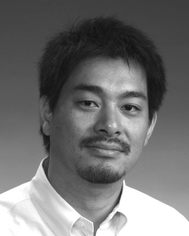 | Hitoshi Miyasaka, born in 1969 in Matsumoto, Japan, obtained his BS (1992) from Shimane University, and then his MS (1994) and PhD (1997) from Kyushu University under the supervision of Prof. Hisashi Okawa and Prof. Naohide Matsumoto. Then, he joined the group of Prof. Susumu Kitagawa at Kyoto University as a post-doctoral researcher of JSPS (1998–2000). For one year from the end of 1999, he was a post-doctoral researcher in the group of Prof. Kim R. Dunbar at Texas A&M University in Texas, USA. In October 2000, he became an assistant professor at the Graduate School of Science, Tokyo Metropolitan University. He was also a research member of the PRESTO project of Japan Science and Technology Agency (JST) in 2002–2004. Since April 2006, he has been an associate professor at the Graduate School of Science, Tohoku University in Sendai. His current research interests are functional molecular materials involved in unique electronic systems or magnetic systems such as single-chain magnets and SMM-based network compounds. He received the Chemical Society of Japan Award for Young Chemists for 2003 and the Young Researcher Award of the Minister of Education, Culture, Sports, Science and Technology for 2006. |
 | Jorge Andrés Rodríguez Navarro was born in 1969. He obtained his PhD from Granada University in 1996 under the supervision of Prof. J. M. Salas and Prof. M. A. Romero and after a post-doctoral stage at the University of Dortmund, Germany (1997–1999) with Prof. B. Lippert he became Associate Professor of Inorganic Chemistry at the University of Granada in 2002. He has co-authored more than 40 papers in peer-reviewed international journals and 1 patent. His research interests are centred on the properties of molecular receptors based on polynuclear coordination compounds. He is particularly interested in the solid–gas and solid–liquid adsorptive properties of flexible porous coordination polymer networks. |
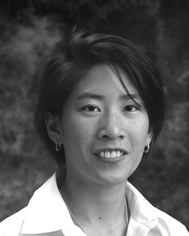 | Teri W. Odom is Assistant Professor and DuPont Young Professor in the Department of Chemistry at Northwestern University. She received her BS degree from Stanford University in 1996 and her PhD from Harvard University in 2001. She joined Northwestern in 2002 and was the inaugural recipient of the Dow Teacher–Scholar Award. Odom has received a Research Innovation Award (Research Corporation, 2002), the Victor K. LaMer Award (ACS Surface Science and Colloids, 2003), and the National Science Foundation's CAREER Award (2004). She was also named as one of MIT Technology Review's Top 100 Innovators in 2004. Odom is a David and Lucile Packard Fellow (2003), an Alfred P. Sloan Fellow (2005), and a Cottrell Scholar of Research Corporation (2005). In 2006, she was awarded the ExxonMobil Solid State Chemistry Faculty Fellowship. Odom's research focuses on the development of large-area nanoscale patterning techniques that can (i) generate photonic and plasmonic nanostructures and (ii) assemble functional nanomaterials by combining chemistry and fabrication. Her primary interest is in the optical properties of individual nanostructures and assembled systems. |
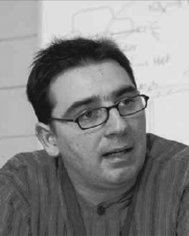 | Emilio J. Palomares received his PhD in chemistry from the Universidad Politécnica de Valencia in 2001. He was awarded a Marie Curie Fellowship to continue working as a post-doctoral researcher at the Centre for Electronic Materials and Devices at Imperial College in London. His research at Imperial College was focused on molecular photovoltaic devices and the development of molecular probes for chemical sensing. Nowadays, at the Institute of Chemical Research of Catalonia, the activities of his research group are strongly driven by their perceptions of society needs, which include the development of carbon neutral renewable energy and the development of low cost sensors for toxic analytes in the environment. As part of his commitment to science, Emilio is also dedicated to increase the interaction between scientists of different disciplines through multidisciplinary research projects and between scientists and the general public. In 2006, he was awarded by the Real Sociedad Española de Química (RSEQ) with the Young Spanish Chemist Research Award. |
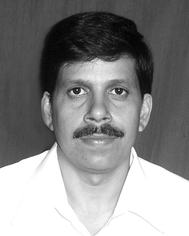 | Swapan K. Pati obtained his PhD from the Indian Institute of Science, Bangalore followed by post-doctoral work in the department of physics at University of California, Davis, and in the chemistry department at Northwestern University. He is currently an associate professor at the Jawaharlal Nehru Centre for Advanced Scientific Research, Bangalore. He is a junior associate of the Abdus Salam International Centre for Theoretical Physics, Italy, since 2003 and has been a visiting faculty member to Purdue University, University of Tokyo and the Max Planck Institute for Physics of Complex Systems, Dresden. He is a recipient of the bronze medal from the Material Research Society of India (2006) and the Chemical Research Society of India (2007). His research interests include quantum many-body theory, molecular electronics, non-linear optical phenomena, quantum magnetism and generalized charge-transfer mechanisms. He is also actively involved in developing new theoretical tools for a holistic understanding of structure–property correlations in a whole range of systems from molecules to materials including biological and biomimetic systems. |
 | Sébastien Perrier graduated from the Ecole National Superieure de Chimie, Montpellier, France in 1998. He received his PhD in 2001 from the University of Warwick for work undertaken under the supervision of Prof. D. M. Haddleton on copper mediated living radical polymerisation/ATRP. He then moved to Australia, to work with Prof. T. P. Davis on RAFT polymerisation. In 2002, Sébastien was appointed as a Lecturer in the Department of Colour and Polymer Chemistry, University of Leeds, and he was promoted to Senior Lecturer in August 2005. Sébastien now heads a group working in the area of polymer synthesis and characterisation. His research focuses on the synthesis of polymers to produce materials with properties that will be set by the polymeric chains' functionalities and architectures. Research projects cover the understanding of mechanisms and kinetics involved in living radical polymerisation, the development of greener processes for radical polymerisation and the synthesis and characterisation of functional materials and polymeric self-assemblies. Sébastien is a member of the European Polymer Journal editorial advisory board, the Macro Group UK committee, and is acting chairman of the RAPS (Recent Appointees in Polymer Science) group for 2006–2007. He also serves as an elected member of the EPSRC's college. In 2006, he received the Macro Group UK Young researcher medal. Sébastien has been invited to various international conferences and is a regular consultant for international companies. In February 2004, he set up a new spin-out company, Designer Polymers Ltd, in order to exploit new IP's generated in his group. |
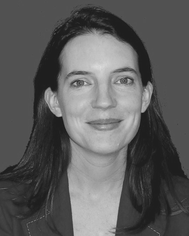 | Molly Stevens joined the faculty of Imperial College in 2004 after performing post-doctoral research at MIT. She runs a large multidisciplinary group in regenerative medicine and nanomaterials and has developed a number of orthopaedic biomaterial therapies for human clinical trial. She has recently been awarded the prestigious Philip Leverhulme Prize for Engineering and in 2004 recognition by the TR100, a compilation of the top innovators, under the age of 35, who are transforming technology—and the world—with their work. Her previous awards include the Ronald Belcher Memorial Lecture Award from the Royal Society of Chemistry and both the Janssen Prize and the UpJohn Prize for academic excellence and research. |
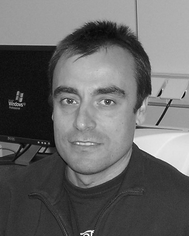 | Pedro Tartaj graduated in physical chemistry from the Universidad Autónoma de Madrid and obtained his PhD in materials chemistry. He developed his scientific career in three different countries (Spain, USA and UK) mainly working on all aspects related to colloids. He holds a permanent position at the Instituto de Ciencia de Materiales de Madrid (CSIC). His current research interests lie in nanoparticulate materials displaying properties, which are the result of finite and surface size effects. |
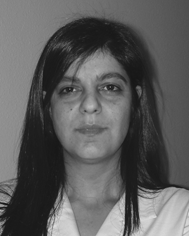 | Kelly Velonia, born in Athens (Greece), completed her undergraduate studies in 1992 and obtained her PhD in 1999 at the Department of Organic Chemistry, University of Crete (Greece). After a post-doctoral stay with Professor R. J. M. Nolte (University of Nijmegen, The Netherlands) and Professor F. C. de Schryver (University of Leuven, Belgium) she accepted an Assistant Professorship at the Department of Organic Chemistry, University of Geneva (Switzerland) in 2004. Her current interests encompass the design and study of biohybrids, self-assembly, supramolecular systems, biocatalysis and single enzyme catalysis. |
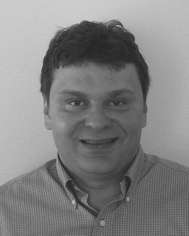 | Markus Wohlgenannt received his masters degree in physics from the Technical University of Graz, Austria, in 1997, and his PhD from the University of Utah, USA, in 2000. His PhD thesis work was on electron spin resonance of π-conjugated semiconductors. He has been with the Department of Physics and Astronomy at the University of Iowa since 2002 and has published over 50 papers. |
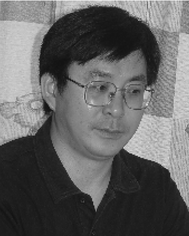 | Deqing Zhang was born in Jiangsu province of China in 1965. He received a BS in chemistry at Beijing Normal University in 1987, a masters degree in organic chemistry from the Institute of Chemistry, CAS in 1990, and a PhD in organic chemistry from Heidelberg University in 1996. His PhD thesis work, under the direction of Professor H. A. Staab, was about the synthesis and physical properties of donor–acceptor cyclophanes. Following his doctoral studies, he joined the Institute of Chemistry, CAS as an associate professor. Since 1999, he has been a Research Professor at the Institute. In 2002 he received the National Science Fund for Distinguished Young Scholars from the National Science Foundation of China. As a visiting scientist, he worked in the Industrial Research Institute of Japan in 1999 and Rennes University I (France) in 2002. His main research interests are the design and synthesis of organic functional molecules and their application in the areas of molecular switches, molecular logic gates and chemical sensors. He also shows interests in molecular magnetism and organic conducting materials. |
 | Ilya Zharov was born in Chelyabinsk, Russia. In 1990 he obtained his BSc from Chelyabinsk State University and moved to Israel, where he attended Technion-Israel Institute of Technology. He obtained his MSc in 1994 for research under the supervision of Professor Yitzhak Apeloig focusing on Si![[double bond, length as m-dash]](https://www.rsc.org/images/entities/char_e001.gif) C and Ge C and Ge![[double bond, length as m-dash]](https://www.rsc.org/images/entities/char_e001.gif) C double bonds. In 1995 Ilya joined the group of Professor Josef Michl at the University of Colorado, Boulder, where he studied group 14 cations, neutral and anionic carboranes, conducting polymers and photoresist materials, and received several graduate fellowships including the Link Foundation Fellowship. In 2000 he obtained his PhD and joined the Beckman Institute for Advanced Science and Technology, University of Illinois at Urbana-Champaign, as a Beckman Fellow. He worked with Professor Steven C. Zimmerman on the preparation of imprinted dendrimers, and performed computer modeling of dendrimers and carbon nanotubes. Ilya started his independent research and teaching career in 2003 at the Chemistry Department, University of Utah. Work in his group focuses on responsive nanoporous materials and on the development of modular macromolecular anti-cancer agents. Ilya has received the Camille and Henry Dreyfus Foundation New Faculty Award and the National Science Foundation CAREER Award. C double bonds. In 1995 Ilya joined the group of Professor Josef Michl at the University of Colorado, Boulder, where he studied group 14 cations, neutral and anionic carboranes, conducting polymers and photoresist materials, and received several graduate fellowships including the Link Foundation Fellowship. In 2000 he obtained his PhD and joined the Beckman Institute for Advanced Science and Technology, University of Illinois at Urbana-Champaign, as a Beckman Fellow. He worked with Professor Steven C. Zimmerman on the preparation of imprinted dendrimers, and performed computer modeling of dendrimers and carbon nanotubes. Ilya started his independent research and teaching career in 2003 at the Chemistry Department, University of Utah. Work in his group focuses on responsive nanoporous materials and on the development of modular macromolecular anti-cancer agents. Ilya has received the Camille and Henry Dreyfus Foundation New Faculty Award and the National Science Foundation CAREER Award. |
























![[double bond, length as m-dash]](https://www.rsc.org/images/entities/char_e001.gif) C and Ge
C and Ge![[double bond, length as m-dash]](https://www.rsc.org/images/entities/char_e001.gif) C double bonds. In 1995 Ilya joined the group of Professor Josef Michl at the University of Colorado, Boulder, where he studied group 14 cations, neutral and anionic carboranes, conducting polymers and photoresist materials, and received several graduate fellowships including the Link Foundation Fellowship. In 2000 he obtained his PhD and joined the Beckman Institute for Advanced Science and Technology, University of Illinois at Urbana-Champaign, as a Beckman Fellow. He worked with Professor Steven C. Zimmerman on the preparation of imprinted dendrimers, and performed computer modeling of dendrimers and carbon nanotubes. Ilya started his independent research and teaching career in 2003 at the Chemistry Department, University of Utah. Work in his group focuses on responsive nanoporous materials and on the development of modular macromolecular anti-cancer agents. Ilya has received the Camille and Henry Dreyfus Foundation New Faculty Award and the National Science Foundation CAREER Award.
C double bonds. In 1995 Ilya joined the group of Professor Josef Michl at the University of Colorado, Boulder, where he studied group 14 cations, neutral and anionic carboranes, conducting polymers and photoresist materials, and received several graduate fellowships including the Link Foundation Fellowship. In 2000 he obtained his PhD and joined the Beckman Institute for Advanced Science and Technology, University of Illinois at Urbana-Champaign, as a Beckman Fellow. He worked with Professor Steven C. Zimmerman on the preparation of imprinted dendrimers, and performed computer modeling of dendrimers and carbon nanotubes. Ilya started his independent research and teaching career in 2003 at the Chemistry Department, University of Utah. Work in his group focuses on responsive nanoporous materials and on the development of modular macromolecular anti-cancer agents. Ilya has received the Camille and Henry Dreyfus Foundation New Faculty Award and the National Science Foundation CAREER Award.